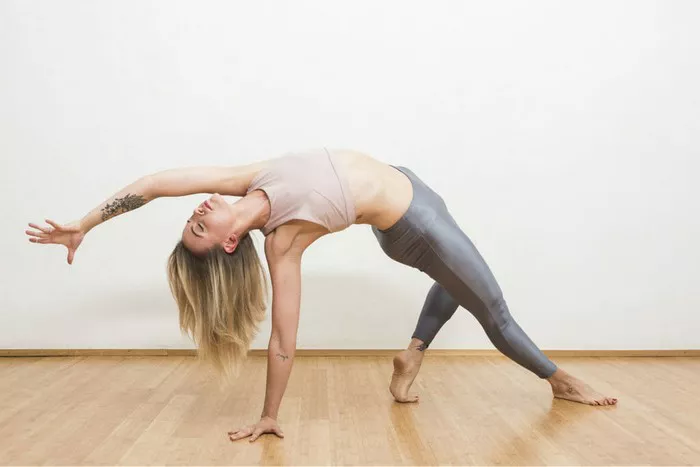In today’s fast-paced world, finding moments of peace and tranquility can seem like a luxury. However, with the practice of yoga meditation, you can create a sanctuary of calm right in the comfort of your own home. While many people may feel intimidated by the idea of starting a meditation practice, especially without the guidance of an instructor, rest assured that it is entirely possible to cultivate a fulfilling and enriching practice on your own. In this comprehensive guide, we will explore the various techniques and strategies you can use to master yoga meditation in the privacy of your home.
Setting the Stage: Creating Your Meditation Space
Before delving into the intricacies of yoga meditation, it’s essential to carve out a dedicated space within your home where you can practice undisturbed. Your meditation space should be free from distractions and conducive to relaxation. Here are some tips for creating the perfect meditation environment:
Choose a Quiet Corner: Select a quiet corner of your home where you won’t be disturbed. Ideally, this space should be away from high-traffic areas and noise.
Decorate Mindfully: Infuse your meditation space with elements that promote tranquility and serenity. Consider adding plants, candles, or soft lighting to create a calming atmosphere.
Use Comfortable Seating: Whether it’s a cushion, a yoga mat, or a comfortable chair, choose seating that supports your body and allows you to sit comfortably for an extended period.
Personalize Your Space: Add personal touches such as inspirational quotes, photographs, or sacred objects that hold meaning for you. These elements can help anchor your practice and make your space feel uniquely yours.
Minimize Distractions: Turn off electronic devices, dim harsh lighting, and minimize clutter in your meditation space. The goal is to create a serene environment that fosters inner stillness and focus.
By setting the stage for your meditation practice, you create a sanctuary where you can retreat to nourish your mind, body, and spirit.
Preparing for Practice: Cultivating the Right Mindset
Before diving into meditation, it’s essential to prepare yourself mentally and emotionally. Cultivating the right mindset can help you approach your practice with openness, curiosity, and compassion. Here are some tips for preparing for your meditation session:
Set Intentions: Take a few moments to reflect on why you’re practicing meditation and what you hope to gain from it. Setting intentions can help guide your practice and infuse it with meaning.
Release Expectations: Let go of any preconceived notions or expectations about what your meditation experience should look or feel like. Approach each session with an open mind and a willingness to accept whatever arises.
Cultivate Patience: Meditation is a skill that takes time and practice to develop. Be patient with yourself and trust in the process, even if progress feels slow or uneven.
Be Kind to Yourself: Treat yourself with kindness and compassion, especially if your mind wanders or you encounter challenges during meditation. Remember that self-compassion is an essential aspect of the practice.
Stay Present: Focus on the present moment and let go of worries about the past or future. By cultivating mindfulness, you can deepen your connection to the present moment and experience greater peace and clarity.
By preparing yourself mentally and emotionally, you lay the foundation for a meaningful and transformative meditation practice.
Exploring Meditation Techniques: Finding What Works for You
There are countless meditation techniques to explore, each offering its own unique benefits and challenges. As you begin your meditation journey at home, feel free to experiment with different techniques to discover what resonates most with you. Here are some popular meditation techniques to consider:
Mindfulness Meditation: Mindfulness meditation involves paying attention to the present moment with openness, curiosity, and acceptance. To practice mindfulness meditation, simply sit quietly and observe your thoughts, sensations, and emotions as they arise, without judgment or attachment.
Breath Awareness: Breath awareness meditation focuses on observing the natural rhythm of your breath. To practice, find a comfortable seated position and bring your attention to the sensation of your breath as it enters and leaves your body. You can also count your breaths or repeat a mantra to help anchor your attention.
Body Scan: Body scan meditation involves systematically bringing awareness to different parts of your body, starting from your toes and gradually moving upward. As you scan each body part, notice any sensations, tension, or discomfort, and allow them to soften and release.
Loving-Kindness (Metta) Meditation: Loving-kindness meditation involves cultivating feelings of love, compassion, and goodwill toward yourself and others. To practice, silently repeat phrases such as “May I be happy, may I be healthy, may I be at peace,” extending these wishes to yourself and then gradually to others.
Visualization: Visualization meditation involves imagining a peaceful and serene scene, such as a tranquil beach or lush forest. As you visualize this scene, engage your senses and immerse yourself fully in the experience, allowing it to evoke feelings of relaxation and joy.
As you explore these meditation techniques, pay attention to how each one affects your mind, body, and emotions. You may find that certain techniques resonate more deeply with you or offer greater benefits in different situations. Ultimately, the key is to find a practice that feels authentic and nourishing to you.
Establishing a Consistent Practice: Cultivating Discipline and Commitment
Consistency is key when it comes to establishing a meditation practice at home. While it’s natural to encounter obstacles and challenges along the way, cultivating discipline and commitment can help you stay on track and reap the full benefits of meditation. Here are some strategies for establishing a consistent practice:
Set a Schedule: Choose a specific time of day to meditate and commit to sticking to it, whether it’s first thing in the morning, during your lunch break, or before bed. Consistency is more important than the length of your sessions, so start with a realistic schedule that you can maintain.
Start Small: If you’re new to meditation, start with short sessions of just a few minutes and gradually increase the duration as you build your stamina. Even just a few minutes of meditation each day can have a profound impact on your well-being.
Use Reminders: Set reminders on your phone or create visual cues in your environment to prompt you to meditate. Having a consistent reminder can help reinforce your commitment to your practice.
Find an Accountability Partner: Share your meditation goals with a friend, family member, or online community and ask them to hold you accountable. Knowing that someone else is supporting your practice can provide an extra layer of motivation and encouragement.
Be Flexible: Life can be unpredictable, and there may be days when it’s challenging to find time to meditate. Instead of beating yourself up for missing a session, be gentle with yourself and commit to getting back on track as soon as possible.
By establishing a consistent meditation practice, you create a foundation for long-term growth and transformation.
Deepening Your Practice: Continuing the Journey
As you continue to explore yoga meditation at home, remember that it’s a journey of self-discovery and growth. Along the way, you may encounter obstacles, setbacks, and moments of profound insight. Embrace each experience as an opportunity to deepen your practice and cultivate greater awareness, compassion, and inner peace. Here are some ways to continue deepening your meditation practice:
Attend Workshops and Retreats: Consider attending meditation workshops, retreats, or classes to deepen your understanding of different meditation techniques and connect with like-minded individuals.
Read Books and Listen to Podcasts: Explore books, podcasts, and other resources on meditation and mindfulness to expand your knowledge and gain new insights into your practice.
Experiment with Advanced Techniques: Once you feel comfortable with the basics, challenge yourself to explore more advanced meditation techniques such as transcendental meditation, vipassana, or Kundalini meditation.
Seek Guidance: If you encounter challenges or feel stuck in your practice, don’t hesitate to seek guidance from experienced meditation teachers or spiritual mentors who can offer support and guidance.
Stay Open and Curious: Approach your meditation practice with a sense of openness, curiosity, and humility. Remember that there is always more to learn and discover, both about yourself and the practice of meditation.
By continuing to deepen your meditation practice, you can unlock new levels of insight, healing, and transformation in your life.
Conclusion
Yoga meditation offers a powerful pathway to inner peace, clarity, and well-being, and you don’t need to attend a studio or class to experience its profound benefits. By following the guidance outlined in this comprehensive guide, you can cultivate a fulfilling and enriching meditation practice right in the comfort of your own home. Remember to create a dedicated meditation space, prepare yourself mentally and emotionally, explore different meditation techniques, establish a consistent practice, and continue to deepen your understanding and experience of meditation over time. With patience, dedication, and an open heart, you can embark on a journey of self-discovery and transformation that will enrich every aspect of your life.


















